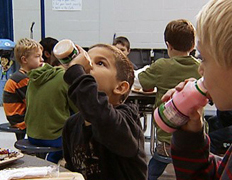 However, an unappealing package, in both appearance and how it affects beverage quality, impacts people's purchasing and drinking decisions.
However, an unappealing package, in both appearance and how it affects beverage quality, impacts people's purchasing and drinking decisions. In our Hoard's Dairyman March 25 Editorial (page 200), we stated that the dairy industry needs to take advantage of the opportunity we have every day to encourage milk consumption through school lunches. That can be done through more appealing packaging and offering a product students enjoy.
A recent example of this happened in Wisconsin, when three milk processing plants placed bids to supply milk to 13 school districts in the southeastern part of the state. Prairie Farms Dairy Inc., based in Carlinville, Ill., topped the two other companies and secured the contract last week.
Prairie Farms Dairy Inc., did not have the lowest bid; in fact, they came in $35,000 higher than the most affordable milk contract option, according to the Milwaukee Journal Sentinel. However, the decision was made not only on price but also flavor, service, package appearance and other criteria.
In blind taste tests, students chose the Prairie Farms Dairy Inc., products over the others. When one of the 13 school districts changed milk vendors this year, they saw milk consumption drop 10 percent, the result of a different milk source that didn't appeal to the students. This further supported the decision to sign a milk contract based on students' preferences. You can read the full article "Kids taste buds seal school milk deal" at http://on.hoards.com/schoolmilk.
This echoes research done by the National Dairy Council several years ago. They found that milk had an 18 percent unit increase and a 37 percent volume surge when plastic bottles were used and flavored milk was offered in schools.
There is no doubt that all three milk plants that placed bids had a good, healthy product, but the flavor and packaging helped win over the taste buds of the students. Rather than letting this be a disappointment, hopefully it spurs a healthy competition between these milk plants and others to continuously improve the products they supply. Changes inside and out, in quality and packaging, could help reverse the current trend of declining fluid milk consumption and, in the end, the entire dairy industry can come out ahead.









